I was talking the other day with my buddy who lives northern Wisconsin on the topic heat pump water heaters (HPWHs). You see, he is in the market for a water heater and was asking my advice on those particular units. Wanting to know more myself, I pulled up some info and the more in-depth Read more
Plumbing
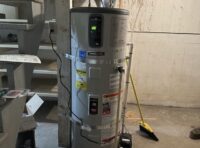
I was talking the other day with my buddy who lives northern Wisconsin on the topic heat pump water heaters (HPWHs). You see, he is in the market for a water heater and was asking my advice on those particular units. Wanting to know more myself, I pulled up some info and the more in-depth I got, the more I wanted to know. Cold weather performance, special ducting, size of mechanical space, accessibility to air, cooling and conditioning of adjacent space are all very important topics of discussion.
But, wait a minute, I thought to myself, I can use some of my “superpowers” as an editor in the trades these past 20+ years to ask people who are more in the know about HPWH than me.
I recently reached out to few people I trust to give me honest assessments of these units.
Advantage Heat Pump Water Heaters
According to Eric Aune, Aune Plumbing, Heating & Drains, there has been a ton of marketing to the public, and even more incentives for installation. “Local utilities are offering rebates upwards of $2-3K in some places, and here in Minnesota, we aren’t seeing rebates that high but it’s clear why the rebates are offered—because its lowering and spreading the load on the grid over longer periods at lower consumption rates. The utilities are trying to stay in front of or (most likely) catch up to the growing demand and stress on the grids all across the country. HPWH’s are one piece to the puzzle.”

John Siegenthaler, P.E., Appropriate Designs, gives three bona fide advantages for HPWHs: One, they are excellent for capturing “surplus heat” (e.g., heat that’s present but not generated by another heat source for the purpose of warming the space). For example, solar heat gain to a garage, or heat generated by computer servers. Two, when properly applied, they can generate a given amount of DHW on about 1/3 the electrical input required by a standard “resistance type” electric water heater (tank or tankless). And three, some models are available that can operate on 120 VAC power, whereas all electric resistance water heaters require 240 VAC power.
But in Cold Climates?
But are these units considered more inefficient the more you climb the northern latitudes to colder climates? “Although heat pump water heaters are often placed in unconditioned spaces such as garages in southern locations, it would be a big mistake to do so in a cold northern climate where outside temperatures are below the minimum operating air temperature for the HPWH for weeks or months during winter,” says Siegenthaler. “The heating performance of any air source heat pump—ductless, central, air-to-water, HPWH, always decreases with decreasing air temperature—Putting any water heater in a cold space is not recommended. Standby heat loss would definitely increase.”
HPWHs have minimum air flow requirements, especially if placed in confined spaces, adds Siegenthaler. The I/O manual supplied with the unit should give all these requirements. “Some units allow ducting of outside air to the heat pump assembly on top of the tank, but I would only use this option in a relatively warm climate. Using ducted outside air also foregoes the cooling and dehumidifying benefit of the HPWH,” says Siegenthaler.
Living in Minnesota, Aune says, “HPWH’s capture/transfer the heat in the space surrounding them to the tank of water. When you talk about this here in Minnesota, it’s common for people to consider this inefficient since the we have to heat with a boiler or furnace, so aren’t we running our space heating system to provide heat for the water heater?
“The reality is the HPWH is able to capture and transfer a lot of energy without major negative effects on the conditioning and comfort of the space with a few considerations like ducting the less humid, colder air to the exterior of the house or even moving it with the furnace or exhaust fans,” says Aune.
According to Gary Klein, principal, Gary Klein and Associates, the majority of HPWHs sold today are hybrid HPWHs, and their efficiency is rated at 67.5 F and 50% relative humidity. “Very close to the temperature we keep the inside of conditioned buildings,” says Klein.
Klein suggests an interesting concept by managing the cold discharge air. “Install the HPWH in the basement near the space conditioning system. Use the return of that system to suck in the cold discharge air from the HPWH and distribute it throughout the house. Use a relay to link the fan to the HPWH. Let the thermostat decide if the air needs to be conditioned. Install a very large filter grille to bring air to the room where the HPWH is installed. (2-inch pleated filters).
“Need the ability to move at least 60 cfm per 100 watts of compressor, fan and control power. Warmer intake air increases the coefficient of performance (COP),” says Klein.
Siegenthaler points out that he did a column earlier this year that discussed a situation where a modern house used an air source heat pump for space heating, and combined it with a HPWH inside the house for DHW. Technically this puts the two heat pumps into a “cascade” relationship, says Siegenthaler.
“Think of the space heating heat pump as ‘feeding’ heat to the HPWH. It’s possible to show that the overall efficiency of this arrangement is lower than using a single air-to-water heat pump for both space heating and domestic hot water (DHW). I think that this is important because many builders, architects, energy planners, energy auditors, etc. don’t necessarily understand this concept. They assume that two heat pumps—one for space heating, and the other for DHW—are better than one.”
Siegenthaler stresses that the “ideal” scenario for a HPWH is to put it in a space where there’s “surplus heat.” “Don’t rob Peter to pay Paul,” says Siegenthaler.
There are plenty of such spaces, suggests Siegenthaler, especially in commercial buildings—manufacturing, heat from vending equipment or refrigeration equipment, cooking, laundry, computers, solar gain, attics that remain above 35ºF year-round, even mechanical rooms with lots of uninsulated piping, boilers, electrical transformers, greenhouses, cannabis grow houses, etc.
“Paraphrasing Patrick Henry, ‘Give me air, or give me death,'” says Klein.
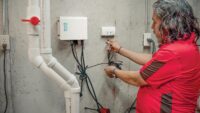
Running a successful plumbing business requires more than just technical expertise; it involves a deep understanding of business operations, customer service, and industry best practices. Whether you’re a seasoned professional or just starting, adhering to best practices can enhance your business’s efficiency, reputation, and profitability. Here are essential best practices every plumbing business owner should Read more
Running a successful plumbing business requires more than just technical expertise; it involves a deep understanding of business operations, customer service, and industry best practices. Whether you’re a seasoned professional or just starting, adhering to best practices can enhance your business’s efficiency, reputation, and profitability. Here are essential best practices every plumbing business owner should know.
1. Stay Updated with Industry Standards and Regulations
The plumbing industry is governed by various standards and regulations to ensure safety and quality. It’s crucial to stay updated with these regulations, including local building codes, environmental regulations, and health and safety standards. Regularly review updates from organizations such as the American Society of Plumbing Engineers (ASPE) and the International Association of Plumbing and Mechanical Officials (IAPMO).
Practical Tips:
- Attend industry seminars and webinars.
- Subscribe to industry publications and newsletters.
- Join professional organizations and participate in their events.
2. Invest in Quality Tools and Equipment
Using high-quality tools and equipment is essential for performing plumbing tasks efficiently and effectively. Investing in reliable tools can prevent delays and reduce the likelihood of errors, leading to improved customer satisfaction and fewer callbacks.
Practical Tips:
- Research and invest in durable, high-performance tools.
- Regularly maintain and service your equipment to ensure longevity.
- Train your team on the proper use and care of tools and equipment.
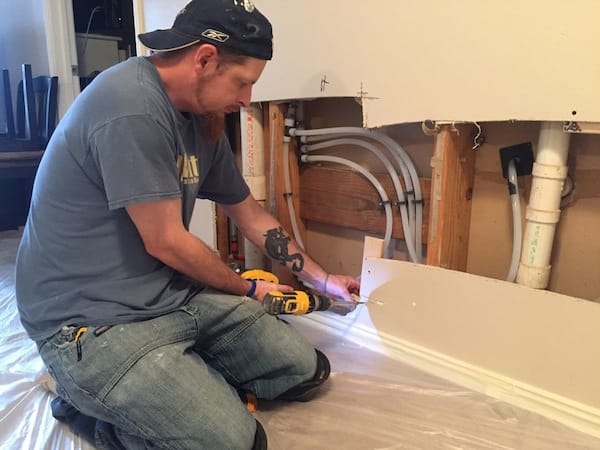
3. Implement Comprehensive Training Programs
Ongoing training is vital for keeping your team’s skills sharp and ensuring they are knowledgeable about the latest techniques and technologies in plumbing. A well-trained team can handle complex issues more effectively, which can set your business apart from competitors.
Practical Tips:
- Provide regular training sessions and workshops.
- Encourage certification and continuing education courses.
- Conduct hands-on training to reinforce theoretical knowledge.
4. Focus on Customer Service
Exceptional customer service is a cornerstone of a successful plumbing business. Building strong relationships with customers can lead to repeat business, positive reviews, and referrals.
Practical Tips:
- Train your staff to communicate effectively and professionally with customers.
- Implement a customer feedback system to gather insights and improve services.
- Be responsive and address customer concerns promptly.
5. Adopt Effective Marketing Strategies
Marketing is essential for attracting new customers and retaining existing ones. Utilize both traditional and digital marketing strategies to increase your business’s visibility and reach.
Practical Tips:
- Develop a user-friendly website with detailed information about your services.
- Utilize social media platforms to engage with your audience and showcase your work.
- Implement search engine optimization (SEO) strategies to improve your online presence.
- Don’t forget old-school methods like mugs with your logo on it.
6. Utilize Technology for Efficiency
Embracing technology can streamline your operations and improve efficiency. From scheduling and invoicing software to advanced diagnostic tools, technology can enhance various aspects of your business.
Practical Tips:
- Invest in plumbing software for scheduling, billing, and customer management.
- Use diagnostic tools and apps to quickly identify and resolve issues.
- Implement a digital inventory management system to keep track of tools and supplies.
7. Prioritize Safety
Safety is paramount in the plumbing industry. Implementing strict safety protocols can prevent accidents and injuries, protecting your employees and clients.
Practical Tips:
- Conduct regular safety training sessions and drills.
- Equip your team with personal protective equipment (PPE).
- Develop and enforce a comprehensive safety policy.
8. Maintain a Strong Online Presence
In today’s digital age, having a strong online presence is crucial for attracting and retaining customers. Your website and social media profiles should reflect your professionalism and expertise.
Practical Tips:
- Regularly update your website with new content, including blogs and customer testimonials.
- Engage with customers on social media by sharing tips, project highlights, and promotions.
- Monitor online reviews and respond to feedback promptly.
9. Offer Competitive Pricing
Competitive pricing can help you attract more customers without compromising on quality. Conduct market research to understand the pricing strategies of your competitors and adjust your rates accordingly.
Practical Tips:
- Regularly review and adjust your pricing based on market trends.
- Offer transparent pricing and detailed estimates to build trust with customers.
- Consider providing discounts or loyalty programs to encourage repeat business.
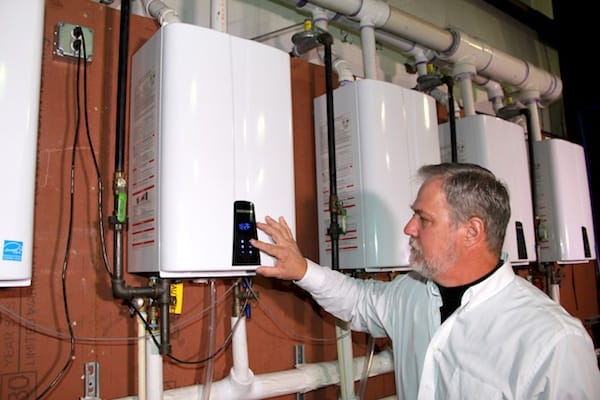
10. Build a Reliable Network of Suppliers
Having a reliable network of suppliers is essential for ensuring you have access to quality materials and equipment. Strong relationships with suppliers can also lead to better pricing and priority service.
Practical Tips:
- Research and select reputable suppliers with a track record of reliability.
- Negotiate contracts to secure favorable terms and pricing.
- Maintain good communication and promptly address any issues that arise.
11. Implement Efficient Scheduling and Dispatching
Efficient scheduling and dispatching can enhance your team’s productivity and ensure timely service delivery. Utilize scheduling software to optimize your workflow and reduce downtime.
Practical Tips:
- Use scheduling software to automate and optimize appointment bookings.
- Implement GPS tracking for your fleet to improve dispatching efficiency.
- Train your team to manage their time effectively and adhere to schedules.
12. Focus on Sustainability
Sustainability is becoming increasingly important in the plumbing industry. Implementing eco-friendly practices can attract environmentally conscious customers and reduce your environmental impact.
Practical Tips:
- Offer eco-friendly plumbing solutions, such as water-saving fixtures and energy-efficient systems.
- Educate customers on sustainable practices and products.
- Reduce waste and recycle materials whenever possible.
13. Monitor and Improve Business Performance
Regularly monitoring your business performance can help you identify areas for improvement and implement effective strategies. Use key performance indicators (KPIs) to measure your success and make data-driven decisions.
Practical Tips:
- Track KPIs such as customer satisfaction, job completion times, and revenue growth.
- Conduct regular performance reviews and adjust strategies as needed.
- Use customer feedback and industry benchmarks to set realistic goals.
14. Maintain Professionalism
Professionalism is crucial for building a positive reputation and earning the trust of your customers. Ensure that your team represents your business in a professional manner at all times.
Practical Tips:
- Establish a professional dress code and grooming standards.
- Train your team on proper etiquette and communication skills.
- Ensure that all interactions with customers are courteous and respectful.
15. Plan for Business Growth
Planning for growth is essential for the long-term success of your plumbing business. Develop a strategic plan that outlines your goals and the steps you’ll take to achieve them.
Practical Tips:
- Identify potential areas for expansion, such as new services or markets.
- Invest in marketing and branding to increase your visibility.
- Consider forming partnerships or acquiring other businesses to expand your reach.
16. Ensure Financial Management and Planning
Effective financial management is crucial for the sustainability and growth of your plumbing business. Proper budgeting, accounting, and financial planning can help you manage cash flow, reduce expenses, and make informed decisions.
Practical Tips:
- Create a Budget: Develop a detailed budget to track your income and expenses. This helps in forecasting future financial needs and avoiding overspending.
- Use Accounting Software: Invest in reliable accounting software to streamline financial tracking and reporting. This can also help identify areas where you can save money.
- Hire a Professional: Consider hiring an accountant or financial advisor to assist with complex financial matters and tax planning.
- Monitor Cash Flow: Regularly monitor your cash flow to ensure you have enough funds to cover operating expenses and invest in growth opportunities.
- Set Financial Goals: Establish short-term and long-term financial goals, and create a plan to achieve them. Regularly review and adjust your goals based on your business’s performance.
Effective financial management ensures that your business remains profitable and can withstand economic fluctuations. By keeping a close eye on your finances, you can make strategic decisions that support growth and sustainability.
Conclusion
Adhering to these best practices can help plumbing business owners enhance their operations, improve customer satisfaction, and achieve long-term success. By staying updated with industry standards, investing in quality tools and training, prioritizing customer service, and embracing technology, you can build a reputable and profitable plumbing business. Remember, the key to success lies in continuous improvement and adaptation to the ever-evolving industry landscape.
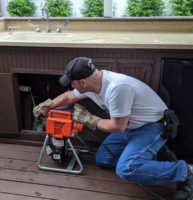
As a plumber, you will want to be as effective and efficient at the job as possible, so you can keep your customers happy and maximize your profits, right? Well, in order to do that, there are a few tools that you must be able to wield with confidence and precision, including the following: The Read more
As a plumber, you will want to be as effective and efficient at the job as possible, so you can keep your customers happy and maximize your profits, right? Well, in order to do that, there are a few tools that you must be able to wield with confidence and precision, including the following:

-
The Almighty Wrench
No plumber’s toolkit is complete without a wrench—or several, because size and type do matter here, folks. From adjustable wrenches to pipe wrenches, these are the bread and butter of plumbing. They twist, turn, tighten, and occasionally serve as an impromptu hammer (though we didn’t officially tell you that). Treat your wrenches like a knight treats his swords; keep them clean, dry, and ready for battle.
-
Plunger: The Suction Cup of Destiny
The humble plunger. Often underestimated, never overvalued. This tool is your first line of defense in the war against clogs. Be it a rebellious toilet or a slow-draining sink, a good old-fashioned plunger usually puts things right. Plus, there’s nothing quite as satisfying as that ‘pop’ when the clog clears. Ah, the sweet sound of success!
-
Pressure Washing Equipment: The Power Player
Sometimes, a job requires pulling out the big guns—or in this case, the big hoses. Pressure washing equipment isn’t just for cleaning driveways or stripping paint; it’s a game-changer for blasting through tough clogs in main sewer lines. It’s like the pressure washer is saying, “I find your lack of flow disturbing,” before restoring order to the galaxy… or at least to your pipes.
-
Hacksaw: The Rough Rider
When you need to cut through metal or plastic pipes, screws, nuts, or bolts, a sturdy hacksaw is your go-to. It’s not the prettiest tool in the shed, but when you need to make a cut, it’s your best friend. Just remember to keep extra blades on hand because nothing dulls the mood quite like a dull blade.
-
Pliers: Grip It Good
Pliers are like your hand’s stronger, tougher older brother. They twist, pull, pinch, hold, and occasionally rescue smaller tools that have fallen into the abyss behind the sink. Locking pliers, especially, are indispensable for those moments when you need an extra hand.
-
Torch: Light It Up
Not just for late-night horror stories, a good torch (or soldering torch, if we’re being technical) is essential for any plumbing work involving copper pipes. Whether you’re sweating a joint or just trying to see in the dark confines of an under-sink cabinet, a torch brings light and heat to the job.
-
Toilet Auger: Go Deeper
Sometimes a plunger just won’t cut it. That’s when the toilet auger, aka the plumber’s snake, slithers in. Designed specifically for toilets, this tool lets you reach deeper into the drain to clear out those particularly awkward clogs that lie beyond the reach of traditional tools.
Equip yourself with these tools, and you’ll be ready to tackle just about any plumbing problem that flows your way, and that means your business will be all the better for it!
Falls Church, Va. — Plumbing-Heating-Cooling Contractors National Association (PHCC) unveils Jeff Butler and Mary Kelly as the keynote speakers for CONNECT 2024 in Birmingham, Alabama, October 7-10, at the Birmingham Jefferson Convention Complex. Jeff Butler is a workplace strategist, who has offered expertise to help companies like Amazon, Google and John Deere foster a harmonious Read more
Falls Church, Va. — Plumbing-Heating-Cooling Contractors National Association (PHCC) unveils Jeff Butler and Mary Kelly as the keynote speakers for CONNECT 2024 in Birmingham, Alabama, October 7-10, at the Birmingham Jefferson Convention Complex.

Jeff Butler is a workplace strategist, who has offered expertise to help companies like Amazon, Google and John Deere foster a harmonious and high-performing workplace. Butler will present a keynote address, “Building an Effective Multi-Generational Workplace.” He will also lead a breakout session on the topic of “Winning the Talent War.”
 Mary Kelly is a Council of Peer Award of Excellence speaker, best-selling author and Navy commander. At CONNECT, Kelly will share various stories and experiences of interest to p-h-c contractors during her keynote address, “Why Leaders Fail and the 7 Prescriptions for Success.” Kelly will also lead a breakout session, “Master Your World,” where she will emphasize effective tactics, practical strategies and innovative solutions that are tailored to dilemmas faced by today’s leaders.
Mary Kelly is a Council of Peer Award of Excellence speaker, best-selling author and Navy commander. At CONNECT, Kelly will share various stories and experiences of interest to p-h-c contractors during her keynote address, “Why Leaders Fail and the 7 Prescriptions for Success.” Kelly will also lead a breakout session, “Master Your World,” where she will emphasize effective tactics, practical strategies and innovative solutions that are tailored to dilemmas faced by today’s leaders.
“I know that many attendees, including myself, are anticipating the remarks that Jeff and Mary will share,” says Joe Cornetta, PHCC national president and co-owner of Cornetta Brothers, Inc., Elmont, New York. “We are excited to have these two leaders join us and help offer invaluable insights to the industry.”
For more details, including the schedule-at-a-glance, visit phccweb.org/CONNECT. This site offers information on education sessions, speakers, exhibitors, registration and hotel reservations, as well as the many attractions of Birmingham, known as “The Country’s Best Kept Secret.”

Finding the perfect mix of glycol and water in a hydronic system doesn’t have to be hard. Guest presenter John Panasewicz will discuss the best ways to specify and maintain water-glycol blends in boilers, chillers and other heat transfer applications. This pre-heating-season webinar will clear up the confusing aspects of antifreeze for designers and installers Read more
Finding the perfect mix of glycol and water in a hydronic system doesn’t have to be hard. Guest presenter John Panasewicz will discuss the best ways to specify and maintain water-glycol blends in boilers, chillers and other heat transfer applications. This pre-heating-season webinar will clear up the confusing aspects of antifreeze for designers and installers.

→ How do you know what percentage of glycol is best for your project?
→ What is the best way to maintain system fluid?
→ What is the difference between freeze and burst?
→ How can recovered glycol be reused?
→ How do air and dirt separation affect system fluids?
John was a founding member of the ASTM D15.30 Subcommittee on Heat Transfer Fluids and will provide both technical and practical insights on this topic. He is the Director of Technology at G2 Solutions in Denver, Colorado.
